Table of Contents
Moscow, Russia’s vibrant capital, is a bustling metropolis that combines historic charm with modern dynamism. Navigating this sprawling city with its iconic landmarks, extensive public transportation network and bustling streets can be both exciting and challenging. To help you make the most of your time in Moscow, we’ve put together a comprehensive guide with transportation and commuting tips.
Moscow, Russia’s vibrant capital, is a captivating blend of the past and the present, where historic charm harmonizes with modern dynamism. It’s a city where centuries-old landmarks stand tall alongside gleaming skyscrapers and where the spirit of progress flows through the veins of tradition. Navigating this sprawling metropolis can be both exhilarating and daunting, as its sheer scale and complexity can leave even seasoned travelers in awe. However, with the right guidance and a sense of adventure, Moscow reveals itself as a city that welcomes exploration. To make the most of your time in this dynamic urban hub, we’ve meticulously crafted a comprehensive guide packed with invaluable transportation and commuting tips.
Moscow: Where History Meets Modernity
Moscow is a city where history is not merely preserved in museums and monuments; it lives and breathes in its streets and buildings. The Kremlin, with its ancient fortifications and stunning cathedrals, stands as a testament to centuries of Russian heritage. At the same time, Moscow City, a glittering business district, reaches for the sky with its towering skyscrapers, embodying Russia’s place in the global economy.
The city’s streets pulse with life, filled with locals and visitors alike. From the historic Red Square, where military parades once marched, to the lively Arbat Street, known for its street performances and vibrant arts scene, Moscow’s streets are a captivating mosaic of the city’s diverse culture and history.
Navigating Moscow’s Vastness
To fully embrace Moscow’s allure, it’s essential to navigate its vastness effectively. This is where the city’s extensive public transportation network comes into play.
The Moscow Metro, renowned for its distinctive architecture and efficiency, is the lifeline of the city. Its stations are not just transit hubs; they are underground art galleries, each with its unique design and character. Familiarize yourself with the metro map, opt for contactless payment methods and plan your trips to avoid peak hours when the trains can be crowded.
Beyond the metro, Moscow’s surface transportation network includes buses, trams, trolleybuses and the Moscow Central Circle (MCC), a commuter rail line that encircles the city center. These options provide extensive coverage and flexibility for getting around the city.
Embracing Moscow’s Transportation Culture
Navigating Moscow’s transportation system isn’t just about getting from point A to point B; it’s a cultural experience. As you travel the Metro’s ornate stations, you’re traversing a rich tapestry of history and art. When you board a tram or bus, you’re mingling with locals on their daily commute, a glimpse into Muscovites’ daily lives.
While using public transportation, it’s important to observe local customs and etiquette. Queuing is a common practice and offering your seat to those in need is a gesture of respect. Language might be a barrier, but most signs and announcements in the Metro are in both Russian and English.
Tips for a Seamless Experience
To ensure a seamless experience while exploring Moscow, consider these practical tips:
Use Navigation Apps: Mobile apps like Yandex.Maps or Google Maps can be your best allies for route planning, real-time updates and estimating travel times.
Plan Ahead: Check event schedules and transportation options when visiting attractions or attending events to avoid any surprises.
Local Recommendations: Don’t hesitate to ask locals for advice on the best transportation routes and hidden gems in the city.
Enjoy the Journey: Moscow’s transportation system isn’t just a means to an end; it’s an opportunity to immerse yourself in the city’s daily rhythm and discover its unique character.
In conclusion, Moscow is a city where navigating its sprawling landscape is an adventure in itself. As you explore its historic sites, modern marvels and vibrant streets, remember that every journey through Moscow is an opportunity to delve into its rich history, culture and the dynamic energy that defines this captivating capital.
Don’t stop here; you can continue your exploration by following this link for more details: Washington State Department of Transportation
Metro Map and Apps
Familiarize yourself with the Moscow Metro map, available in print and digital formats. Several mobile apps offer real-time information and route planning.
Navigating the sprawling expanse of Moscow is made significantly easier with a thorough understanding of the Moscow Metro system. To embark on your journey with confidence and convenience, it’s essential to familiarize yourself with the Moscow Metro map, which is readily available in both print and digital formats.
Printed Metro Maps: Moscow’s Metro system provides printed maps at stations and various information kiosks throughout the city. These maps are a valuable resource for travelers who prefer a tangible reference. They not only display the network’s intricate web of lines and stations but also often include station names in both Russian and English, making it accessible to international visitors.
Digital Metro Maps and Apps: In our digital age, navigating the Moscow Metro has become even more convenient thanks to mobile apps designed specifically for this purpose. Several apps offer real-time information, route planning and additional features to enhance your Moscow Metro experience. These apps are user-friendly and can be indispensable tools for travelers and residents alike.
Beyond just maps, these apps typically include features such as:
Real-Time Updates: Stay informed about service disruptions, delays and other important announcements to adjust your travel plans accordingly.
Route Planning: Input your starting point and destination and the app will provide you with the quickest and most efficient route, often taking into account transfer times and station changes.
Station Information: Get detailed information about each station, including its history, nearby points of interest and accessibility features.
Multilingual Support: Many of these apps are available in multiple languages, making it easier for non-Russian speakers to navigate the system.
Ticketing Options: Some apps allow you to purchase Metro tickets or load fare onto transportation cards digitally, streamlining the payment process.
Offline Functionality: Some apps offer offline maps and route planning, ensuring you can navigate the Metro even without an internet connection.
User Reviews and Tips: Benefit from the experiences of fellow travelers by reading reviews and tips about specific stations or routes.
By embracing both printed and digital resources, you can approach the Moscow Metro system with confidence, allowing you to explore the city’s rich history, vibrant culture and diverse neighborhoods with ease. Whether you’re a visitor eager to discover Moscow’s iconic landmarks or a resident navigating daily life, these tools ensure that your Metro journeys are efficient, enjoyable and stress-free.
For a comprehensive look at this subject, we invite you to read more on this dedicated page: The Moscow Metro in 6 Adjectives – The Fearless Foreigner
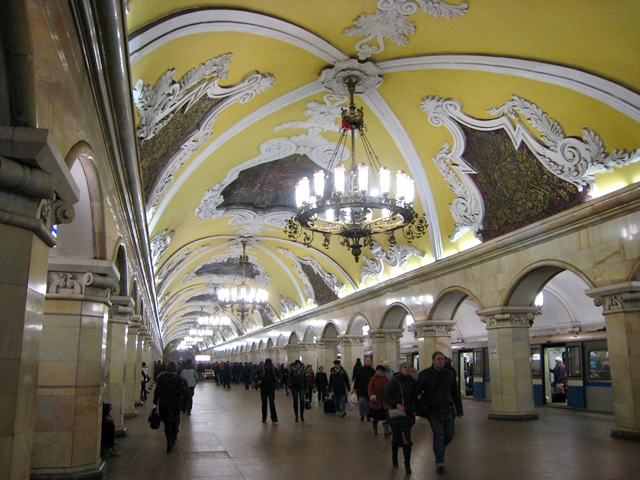
Fare System
Purchase a reusable Troika card or use contactless payment methods like Apple Pay and Google Pay for Metro rides. These cards can also be used on buses, trams, trolleybuses and the monorail.
Purchase a reusable Troika card or use contactless payment methods like Apple Pay and Google Pay for Metro rides. These cards can also be used on buses, trams, trolleybuses and the monorail, making them the ultimate travel companion for navigating Moscow’s extensive public transportation network.
The Troika card, adorned with its iconic design, is more than just a ticket—it’s a key to the city’s mobility. Once you have one in hand, you’ll find that getting around Moscow becomes incredibly convenient. The card works seamlessly across various modes of public transportation, ensuring a smooth transition from the Metro to buses, trams and even the futuristic monorail.
One of the advantages of the Troika card is its flexibility. You can load it with various types of tickets, including single rides or multi-day passes, depending on your travel needs. This flexibility extends to multiple passengers as well. If you’re traveling with friends or family, a single Troika card can be used for multiple people, making it a cost-effective option for groups.
Contactless payment methods like Apple Pay and Google Pay offer another level of convenience. With just a tap of your smartphone or smartwatch, you can swiftly pass through the turnstiles, eliminating the need for physical cards altogether. This not only saves time but also reduces the chances of losing your card.
Moreover, these payment methods are not limited to public transportation; you can use them for various purchases in Moscow, including at shops, restaurants and even for parking fees. It’s a versatile way to handle your finances while traveling in the city.
By embracing the Troika card or contactless payment methods, you’ll not only simplify your travel but also contribute to the city’s eco-friendly initiatives. These options reduce the need for disposable paper tickets, aligning with Moscow’s commitment to sustainability.
So, as you plan your adventures in Moscow, consider the Troika card or contactless payments as your trusty companions. They’ll open the doors to Moscow’s rich cultural experiences and historic landmarks while making your journey through the city as smooth and efficient as possible.
For a comprehensive look at this subject, we invite you to read more on this dedicated page: Local Transit | University of Idaho

Rush Hour
Be prepared for the morning and evening rush hours, when the Metro can become crowded. If possible, plan your travels during off-peak times to enjoy a more comfortable journey.
Be prepared for the hustle and bustle of the morning and evening rush hours when using the Metro, as these are the busiest times of the day. During these peak periods, platforms can become crowded and trains are often packed to capacity. While this is a testament to the efficiency and popularity of the Metro system, it can be an intense experience, especially for newcomers.
To ensure a more comfortable and stress-free journey, consider planning your travels during off-peak times whenever possible. This simple adjustment to your schedule can make a world of difference in your commute. During mid-morning or mid-afternoon hours, you’ll find fewer commuters, more space to move around and a generally quieter atmosphere.
Traveling during off-peak times not only provides physical comfort but also offers other advantages. It allows you to explore the Metro system at a more relaxed pace, take in the architectural beauty of the stations and read the informative signs and artwork that often adorn the walls. You’ll also have a better chance to secure a seat, which can make your journey more enjoyable, especially if you have a longer commute.
Moreover, off-peak travel provides a more leisurely and less stressful experience for those traveling with children, strollers or luggage. It’s an excellent opportunity to navigate the system with ease and avoid the rush and crowds that can sometimes be overwhelming.
While adjusting your schedule to avoid rush hours may not always be feasible, it’s a valuable strategy to keep in mind, especially if you value a more relaxed and comfortable commute. So, whether you’re a daily commuter or a visitor exploring the city, consider planning your Metro rides during off-peak times to enhance your overall experience and make the most of your time in the city’s efficient and iconic subway system.
Don’t stop here; you can continue your exploration by following this link for more details: Getting Around Minnesota | Explore Minnesota
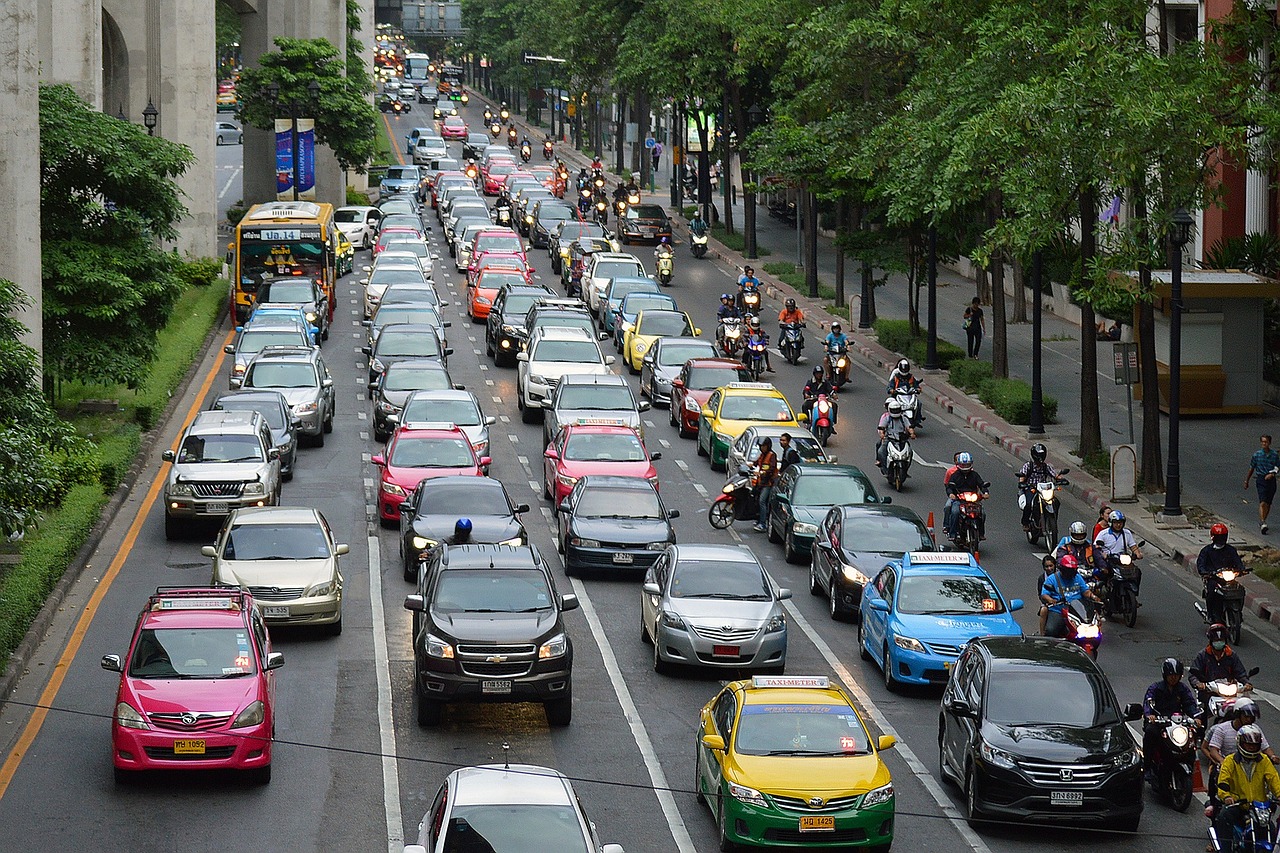
Accessibility
Note that not all Metro stations are wheelchair accessible, so check in advance if you have accessibility needs. Some stations have elevators and ramps.
Accessibility is a crucial consideration when navigating a city’s public transportation system and the Moscow Metro is no exception. While this expansive and efficient underground network serves millions of passengers daily, it’s essential to note that not all Metro stations are wheelchair accessible. For individuals with mobility challenges or accessibility needs, some pre-planning can go a long way in ensuring a smooth and enjoyable journey through the city.
Accessibility information for Moscow Metro stations is readily available and can be found on the official Moscow Metro website or in various travel guides. Checking in advance which stations have wheelchair accessibility can help you map out your route and avoid any unexpected challenges during your journey.
Fortunately, efforts have been made to improve accessibility in recent years and many stations are equipped with elevators and ramps to facilitate entry and exit for passengers with disabilities or those using strollers or heavy luggage. These stations are typically identified with clear signage and symbols indicating accessibility features.
When planning your journey, consider starting and ending your trip at stations that offer these accessibility features. Additionally, it’s a good idea to have alternative routes in mind in case your preferred station lacks the necessary accessibility infrastructure. Knowing your options can help you navigate the Metro with confidence.
Furthermore, the Moscow Metro staff is often willing to provide assistance to passengers with accessibility needs. Don’t hesitate to reach out to station personnel for guidance or support if you encounter any challenges during your journey. They are generally responsive and committed to ensuring that all passengers can enjoy the convenience and efficiency of the Moscow Metro.
By checking accessibility information, choosing stations with elevators and ramps and being proactive in seeking assistance when needed, you can make the most of your Moscow Metro experience, allowing you to explore the vibrant city with ease and confidence. Moscow’s rich history, stunning architecture and cultural attractions are waiting to be discovered and accessible transportation options ensure that everyone can enjoy all that this captivating city has to offer.
Additionally, you can find further information on this topic by visiting this page: Building a transport system that works: Five insights from our 25-city …

Expanding Your Options: Buses, Trams and Trolleybuses
In addition to the Metro, Moscow’s surface transportation network offers extensive coverage throughout the city:
“In addition to the Metro, Moscow’s surface transportation network offers extensive coverage throughout the city, providing residents and visitors with a convenient and efficient means of getting around. This intricate web of buses, trams, trolleys and marshrutkas (shared minivans) connects even the most far-flung neighborhoods, making every corner of Moscow accessible.
Buses: Moscow’s bus network is a lifeline for many commuters, with routes that crisscross the city. The extensive bus system is particularly useful for reaching areas that may not have direct Metro access. It’s a common sight to see buses adorned with colorful advertisements and route numbers, making them easily recognizable. For tourists, buses also offer the advantage of a street-level view of the city’s landmarks and neighborhoods.
Trams and Trolleys: Trams and trolleys are integral to Moscow’s surface transportation. These electric-powered vehicles traverse both main thoroughfares and quiet side streets, providing a glimpse into the city’s everyday life. Trams, with their distinctive design and tracks embedded in the road, are a charming mode of transportation that offer a leisurely journey through Moscow’s streets.
Marshrutkas: For a more flexible and faster option, marshrutkas are a popular choice. These shared minivans follow fixed routes but can make unscheduled stops upon request. They offer a convenient way to navigate the city, especially during peak hours when traffic congestion can affect larger buses.
E-Ticketing: Moscow’s surface transportation network has modernized its ticketing system with electronic options, making it easier than ever to pay for rides. Passengers can use contactless cards or mobile apps to pay for their journeys, eliminating the need for paper tickets and making the commute smoother.
Integrating Modes: What sets Moscow’s transportation system apart is its integration. The Metro, buses, trams, trolleys and marshrutkas are all interconnected, allowing passengers to seamlessly transfer between modes of transportation with a single ticket. This integrated system streamlines commutes and provides flexibility in choosing the most efficient route.
Accessibility: Moscow is continually working to improve the accessibility of its surface transportation for individuals with disabilities. Many buses, trams and trolleys are equipped with ramps and designated spaces for wheelchair users. The city is also taking steps to improve accessibility at bus stops and tram stations.
Navigating Moscow’s surface transportation network is not just about getting from point A to B; it’s an opportunity to explore the city’s diverse neighborhoods and observe its dynamic street life. Whether you’re on a leisurely tram ride through historic districts or catching a bus to reach a specific destination, Moscow’s surface transportation is an essential part of the city’s fabric, connecting its residents and visitors to its vibrant tapestry of culture and history.”
To delve further into this matter, we encourage you to check out the additional resources provided here: Guide to getting around Milan using public transport

Buses
Moscow’s bus routes cover areas not served by the Metro. They are a convenient way to reach destinations off the subway grid, marked with red signs.
Moscow’s bus routes are a vital part of the city’s public transportation network, offering a convenient way to reach destinations that may not be directly accessible via the Metro system. While the Metro primarily covers the central areas of Moscow, the bus routes extend further into the city’s outskirts, connecting neighborhoods and districts that might otherwise be less accessible. Here’s why Moscow’s buses are an essential component of the city’s transportation system:
1. Accessibility: Buses play a crucial role in making Moscow more accessible to residents and visitors alike. They serve areas that are not covered by the Metro network, ensuring that people can reach their desired destinations with relative ease. This accessibility is especially valuable for those living in the city’s outer districts or for travelers looking to explore less central parts of Moscow.
2. Complementing the Metro: The Metro system is known for its efficiency and speed, making it the preferred mode of transportation for many commuters. However, the Metro can become crowded during peak hours and certain areas may not have Metro stations nearby. Buses complement the Metro by providing alternative routes and reducing congestion on the subway lines.
3. Convenience: Bus stops are typically well-marked with red signs, making them easy to identify and locate throughout the city. Moscow’s extensive bus network means you’re likely to find a bus stop near your starting point and destination, allowing for a relatively seamless commute.
4. Coverage of Neighborhoods: Moscow is a vast city with diverse neighborhoods, each offering its own unique charm and attractions. Buses ensure that residents and tourists can explore these neighborhoods, whether it’s discovering hidden gems, visiting local markets or experiencing the cultural richness of different parts of the city.
5. Cost-Effective Travel: Buses are generally an affordable mode of transportation in Moscow. They provide an economical way to get around the city while saving on transportation costs, especially when compared to taxis or ride-sharing services.
6. Integration with Other Modes: Moscow’s public transportation system is well-integrated. Buses connect seamlessly with the Metro, tram lines and the Moscow Central Circle (MCC), allowing passengers to transfer easily between different modes of transit for a comprehensive transportation experience.
7. 24/7 Service: Some bus routes in Moscow operate around the clock, providing a valuable transportation option for those who need to travel at unconventional hours or during the night.
While Moscow’s Metro system may be the backbone of the city’s public transportation, the bus network complements it effectively, ensuring that residents and visitors can traverse the entire metropolis with convenience and efficiency. Whether you’re venturing to the heart of Moscow or exploring its lesser-known corners, the city’s buses play a vital role in making your journey possible.
For additional details, consider exploring the related content available here Building smart transport in Moscow | McKinsey

Trams and Trolleybuses
Trams and trolleybuses are integral parts of Moscow’s public transport system. They provide additional options for getting around the city, especially in older neighborhoods with narrow streets.
Trams and trolleybuses are not just modes of transportation in Moscow; they are living relics of the city’s history and an essential part of its modern urban fabric. Here’s why these iconic vehicles are more than just a means to an end:
Historical Charm: Trams and trolleybuses have a nostalgic appeal that harks back to a bygone era. Riding these vehicles is like taking a trip through time, as many of them have retained their classic designs and charm.
Scenic Routes: Moscow’s tram and trolleybus routes often traverse scenic and historic parts of the city, providing passengers with an opportunity to enjoy picturesque views of architectural landmarks, tree-lined streets and charming neighborhoods. It’s like having a guided tour on your daily commute.
Eco-Friendly Transit: Trams and trolleybuses are eco-friendly modes of transportation, as they run on electricity. This aligns with Moscow’s commitment to sustainability and reducing the city’s carbon footprint.
Niche Accessibility: In older neighborhoods with narrow streets or areas not easily accessible by metro or larger buses, trams and trolleybuses are a lifeline. They provide vital transportation options for residents and commuters in these parts of the city.
Affordable Fare: Trams and trolleybuses often offer more affordable fares compared to some other modes of transportation. This makes them a budget-friendly choice for daily commuting or leisurely explorations.
Quiet and Comfortable: The rhythmic hum of trams and trolleybuses, combined with their smooth rides, can create a soothing and comfortable travel experience. It’s a chance to escape the hustle and bustle of the city, even if only for a short while.
Community Connection: Trams and trolleybuses are often associated with a strong sense of community. Passengers on these vehicles tend to have a neighborly camaraderie and you might strike up conversations with fellow riders or even make new friends during your journey.
Accessibility: Trams and trolleybuses are designed to be accessible to passengers with limited mobility. Many have low-floor entry options and designated spaces for passengers with disabilities, ensuring that public transportation remains inclusive for all.
Cultural Experience: Riding on trams and trolleybuses is a cultural experience in itself. You’ll witness a cross-section of Moscow’s diverse population, from students and professionals to artists and families, all sharing a common space and journey.
Preservation of Heritage: Moscow’s commitment to preserving its heritage is evident in its continued operation of trams and trolleybuses. These vehicles serve as living history museums and a testament to the city’s enduring traditions.
In essence, trams and trolleybuses in Moscow are not just vehicles; they are storytellers, taking passengers on a journey that weaves together the past, present and future of this dynamic and culturally rich metropolis. Riding them is not just about reaching your destination; it’s about immersing yourself in the heart of Moscow’s history and daily life.
To delve further into this matter, we encourage you to check out the additional resources provided here: 8 Bayshore | SFMTA

Moscow Central Circle (MCC)
The MCC is a commuter rail line encircling the city center. It connects with the Metro and offers an efficient way to reach destinations on the city’s outskirts.
The MCC or Moscow Central Circle, is a commuter rail line that plays a pivotal role in Moscow’s transportation network. This circular rail route is not only a practical means of commuting but also a unique way to explore the city and its surroundings.
Efficient Commuting: The MCC serves as a lifeline for many residents, providing a reliable and efficient mode of transportation for daily commutes. Its strategic location, encircling the city center, ensures that it intersects with multiple Metro lines, making it easy for passengers to transfer between different modes of transit seamlessly. This connectivity is a game-changer for commuters, saving them time and simplifying their daily journeys.
City Exploration: Beyond its utilitarian purpose, the MCC offers a fantastic opportunity for visitors and even locals to explore Moscow from a different perspective. As you ride along the MCC, you’ll be treated to scenic views of both the city’s iconic landmarks and its less-visited neighborhoods. It’s a unique way to witness the city’s diverse urban landscapes, from the historic city center to the modern business districts and residential areas.
Access to Outskirts: The MCC is not just about city-center convenience; it also serves as a gateway to Moscow’s outskirts and surrounding regions. For travelers looking to venture beyond the city limits, the MCC connects with major train stations, making it easy to access destinations throughout the Moscow Oblast and even farther afield. Whether you’re planning a day trip to a nearby town or embarking on a longer journey to explore Russia’s vast landscapes, the MCC can be your starting point.
Historical Significance: The MCC also carries historical significance, as it incorporates elements of the famous Koltsevaya Line (Ring Line) that operated in the early 20th century. Riding the MCC is like taking a journey through time, with echoes of Moscow’s past intermingling with its modern vibrancy.
In essence, the MCC is not just a commuter rail line; it’s a dynamic artery that pulsates with the rhythm of Moscow life. Whether you’re a regular commuter, an adventurous traveler or someone simply looking for an alternative way to experience the city, the MCC offers an efficient, scenic and historically rich mode of transportation that should not be missed during your time in Moscow.
Should you desire more in-depth information, it’s available for your perusal on this page: Tips for bringing bicycles on the metro, commuter trains and buses …

Taxis and Ride-Sharing Apps
Taxis and ride-sharing apps like Yandex.Taxi and Uber are readily available in Moscow. Here are some tips for using them:
Taxis and ride-sharing apps like Yandex.Taxi and Uber are readily available in Moscow, offering convenient transportation options to navigate the bustling city. To make the most of these services and ensure a smooth and enjoyable ride, consider the following tips:
1. Download the Apps: Before you hit the streets of Moscow, download the Yandex.Taxi and Uber apps onto your smartphone. These apps are user-friendly and available in multiple languages, making it easy for travelers to request rides.
2. Internet Connectivity: Ensure you have a stable internet connection while using ride-sharing apps. Moscow’s extensive Wi-Fi coverage and reliable mobile data networks ensure you can always stay connected.
3. Language Settings: Set your preferred language within the app for clear communication with drivers. Most drivers in Moscow may not be fluent in English, so having the app in your preferred language can help bridge any language barriers.
4. Fare Estimates: Both Yandex.Taxi and Uber provide fare estimates before confirming your ride. Use this feature to get an idea of the approximate cost of your journey. Keep in mind that fares may vary based on factors like traffic and route.
5. Payment Options: Familiarize yourself with the payment options available on the apps. You can link your credit card or digital payment methods to the app for cashless transactions. This is not only convenient but also a secure way to pay for your rides.
6. Verify the Driver: Before entering the vehicle, verify that the driver and vehicle match the information displayed on the app. Check the driver’s photo and vehicle details, including the license plate number. This ensures your safety and confirms you’re getting into the right car.
7. Share Your Ride: For added security, share your ride details with a friend or family member. Both Yandex.Taxi and Uber allow you to share your trip status and location with trusted contacts. This provides peace of mind for both you and your loved ones.
8. Pinpoint Your Location: Use the app’s GPS functionality to pinpoint your exact location for pickup. Moscow’s extensive street grid can sometimes be complex, so providing an accurate pickup point helps the driver locate you quickly.
9. Traffic Awareness: Be aware that Moscow’s traffic can be heavy at times, especially during rush hours. Plan your rides accordingly, allowing extra time for travel when needed. The apps often provide real-time traffic updates to help you make informed decisions.
10. Ratings and Reviews: After each ride, take a moment to rate your driver and provide feedback. This helps maintain service quality and safety standards within the ride-sharing community.
11. Cash Tipping: Tipping is not obligatory but appreciated. If you wish to tip your driver, you can do so through the app or in cash. It’s a gesture of gratitude for a safe and pleasant ride.
12. 24/7 Availability: Both Yandex.Taxi and Uber operate 24/7 in Moscow, making them reliable options for late-night or early-morning travel.
Ride-sharing apps have revolutionized transportation in Moscow, offering convenience and accessibility to residents and travelers alike. By following these tips and using these apps responsibly, you can make the most of your transportation experience in the vibrant and dynamic city of Moscow. Whether you’re exploring historic landmarks, dining at local restaurants or attending cultural events, reliable transportation is just a tap away.
If you’d like to dive deeper into this subject, there’s more to discover on this page: Queens Travel Guide | Melanie May – Travel Eat Write Repeat

Yandex.Taxi
Yandex.Taxi is a popular ride-sharing service in Moscow, available in multiple languages. The app provides upfront pricing and payment can be made through various methods, including cash.
“Yandex.Taxi is a popular ride-sharing service in Moscow, available in multiple languages. The app provides upfront pricing and payment can be made through various methods, including cash.
Convenience and Accessibility: Yandex.Taxi offers a level of convenience that’s especially valuable in a bustling city like Moscow. With the app, you can request a ride at any time, whether you’re exploring the historic Red Square, attending a performance at the Bolshoi Theatre or simply navigating the city’s vibrant neighborhoods. The availability of multiple languages ensures that both locals and tourists can easily use the service.
Transparent Pricing: One of the standout features of Yandex.Taxi is its upfront pricing model. Before confirming your ride, you’ll receive an estimated fare, allowing you to make informed decisions about your transportation. This transparency is particularly helpful for budget-conscious travelers and residents alike.
Payment Flexibility: Yandex.Taxi understands that not everyone prefers digital payments. In addition to credit card payments, the service accepts cash, which can be a convenient option for those who prefer physical currency or travelers who haven’t had the chance to exchange money yet. This flexibility sets Yandex.Taxi apart in accommodating various payment preferences.
Safety and Reliability: Yandex.Taxi prioritizes safety and reliability. The app provides information about your driver, including their name and photo and you can track your driver’s location in real-time. This added transparency enhances the overall sense of security while using the service.
Additional Features: Yandex.Taxi often offers promotions and discounts, making it an even more attractive choice for cost-conscious passengers. Additionally, the app allows you to set your destination and see the estimated time of arrival, helping you plan your journeys more efficiently.
In a city as vast and bustling as Moscow, having a reliable and convenient ride-sharing service like Yandex.Taxi can greatly enhance your experience. Whether you’re a resident using it for your daily commute or a visitor exploring the city’s many attractions, Yandex.Taxi’s user-friendly app, transparent pricing and multiple payment options make it a valuable transportation resource that simplifies getting around the city.”
If you’d like to dive deeper into this subject, there’s more to discover on this page: The Complete Guide To Travel In Uzbekistan For 2023 – 18 Very …
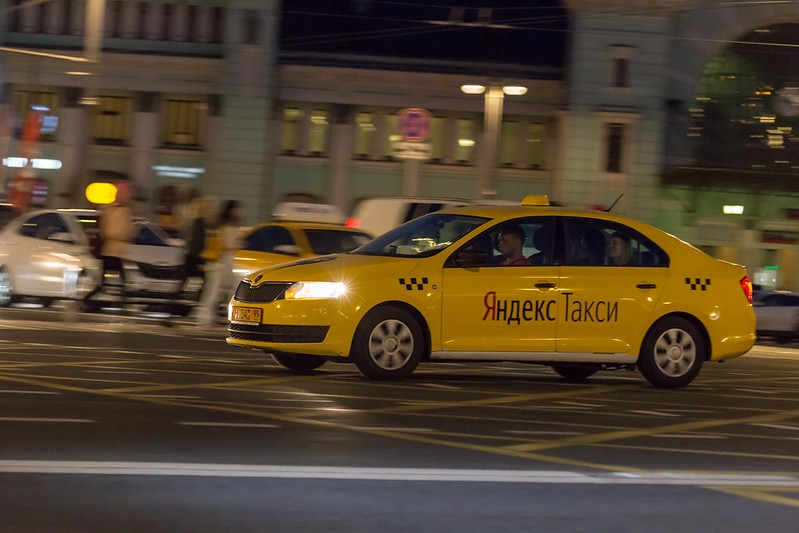
Uber
Uber is another reliable option for getting around Moscow. It offers competitive pricing and convenient payment options.
Uber has become a trusted companion for navigating the vibrant streets of Moscow. As you explore this bustling metropolis, you’ll find that Uber offers a range of advantages that enhance your transportation experience.
Competitive Pricing: Uber’s competitive pricing makes it an attractive choice for travelers looking for affordability and transparency in their rides. With upfront fare estimates, you can plan your budget with confidence, knowing that you won’t be caught off guard by unexpected charges.
Convenient Payment Options: Uber simplifies the payment process, allowing you to link your preferred payment method to your account. Whether you choose to pay with your credit card, mobile wallet or another payment option, the process is seamless and secure. No need to carry cash or worry about currency exchange rates; your fare is automatically charged based on the details in your Uber app.
Real-Time Tracking: Uber’s app provides real-time tracking of your ride, so you can monitor your driver’s progress as they make their way to your location. This feature not only adds a level of convenience but also enhances safety and peace of mind.
Driver Ratings and Reviews: Before you step into an Uber vehicle, you can access driver ratings and reviews from previous passengers. This transparency allows you to choose a driver who aligns with your preferences, ensuring a comfortable and enjoyable ride.
Multilingual Support: Moscow is a diverse and international city and Uber caters to a wide range of passengers by offering multilingual support through its app. Whether you’re a local or a tourist, you can navigate the app in your preferred language.
Safety Measures: Uber prioritizes the safety of its passengers. The app provides a feature for sharing trip details with trusted contacts and you can also contact emergency services directly from the app if needed. Additionally, Uber has implemented health and safety guidelines to ensure a safe and sanitized environment for passengers.
Options for Every Occasion: Uber offers a variety of ride options to suit your needs. Whether you’re traveling solo, with friends or in a larger group, you can choose from options like UberX, UberBlack and UberXL. For a more cost-effective choice, consider UberPool, which allows you to share a ride with others headed in the same direction.
Airport Convenience: If you’re arriving in or departing from Moscow by air, Uber provides a convenient and reliable option for airport transfers. You can request a ride to or from major airports like Sheremetyevo International Airport, Domodedovo International Airport and Vnukovo International Airport.
Exploring Beyond the City: If your Moscow adventure takes you beyond the city limits, Uber can also accommodate longer trips to nearby destinations, making it a versatile choice for exploring the broader Moscow region.
With its competitive pricing, convenient payment options and commitment to safety, Uber is a valuable resource for travelers and residents alike in Moscow. Whether you’re headed to iconic landmarks, cultural attractions or hidden gems, Uber can help you reach your destination with ease and reliability. So, sit back, relax and let Uber be your trusted partner in experiencing the vibrant city of Moscow.
If you’d like to dive deeper into this subject, there’s more to discover on this page: Local Transit | University of Idaho

Taxi Stands
To ensure a safe and legitimate ride, use official taxi stands, especially at transportation hubs like airports and train stations.
In the world of modern transportation, where convenience often comes at the tap of an app, it’s essential to remember the timeless wisdom of ensuring a safe and legitimate ride. While ride-sharing services and taxis are readily available in many urban centers, there are moments when using official taxi stands remains not just a matter of convenience, but also a fundamental aspect of ensuring your safety and well-being, particularly at transportation hubs like airports and train stations.
**1. Safety First: Official taxi stands are established with your safety in mind. They are typically well-lit, monitored and regulated, creating an environment where both drivers and passengers can feel secure. The presence of security personnel or surveillance cameras adds an extra layer of protection, deterring potential misconduct.
**2. Legitimacy Guaranteed: Official taxi stands are operated by authorized transportation authorities or agencies. This means that the drivers who pick you up from these stands are licensed, registered and vetted by the appropriate authorities. You can have confidence that you are entering a legitimate taxi with a qualified driver.
**3. Transparent Pricing: Official taxi stands often have transparent pricing structures. You can expect fare rates to be clearly displayed, preventing any surprises or disputes regarding the cost of your ride. Knowing the fare in advance allows you to budget effectively and make informed decisions.
**4. Reliable Service: Official taxi stands are part of a well-established transportation network. This means that you can expect reliable service, even during peak travel times. You’re less likely to encounter issues like long wait times or unavailable vehicles when using these designated stands.
**5. Accessibility: Transportation hubs like airports and train stations are high-traffic areas where various forms of transportation converge. Official taxi stands are strategically located within these hubs, making them easily accessible to travelers. They provide a convenient and efficient means of getting to your destination without the hassle of searching for a ride.
**6. Assistance and Information: At official taxi stands, you often find attendants or information desks that can provide assistance and guidance. Whether you need directions, information about your destination or help with luggage, these resources are readily available to enhance your travel experience.
**7. Accountability: In the event of any issues or disputes during your ride, using an official taxi stand provides a clear chain of accountability. You can report concerns to the relevant transportation authority and they can take appropriate action to address the matter.
**8. Support for Local Economy: By using official taxi stands, you contribute to the local economy and support the livelihoods of licensed taxi drivers who play a crucial role in the transportation ecosystem.
While ride-sharing apps have revolutionized the way we hail rides, official taxi stands continue to be valuable, especially in ensuring your safety and peace of mind, particularly when you’re in an unfamiliar city or country. They represent a reliable and well-regulated option that complements the convenience of modern transportation. So, the next time you’re at an airport or train station, consider using the official taxi stand for a journey that is not only convenient but also secure and legitimate. Your safety and travel experience deserve nothing less.
To delve further into this matter, we encourage you to check out the additional resources provided here: Transportation | Pullman Campus | Washington State University
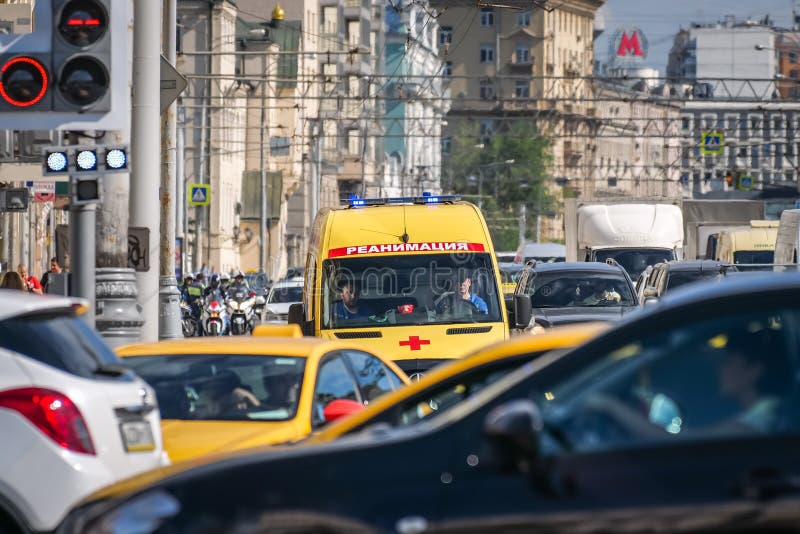
Commuting Etiquette and Tips
When using public transportation in Moscow, it’s essential to be mindful of local customs and etiquette:
When using public transportation in Moscow, it’s essential to be mindful of local customs and etiquette, as it not only ensures a smoother travel experience but also fosters mutual respect among passengers.
Queue Politely: Russians value orderly queues, so when waiting for a bus or metro, make sure to stand in line and wait your turn. Pushing or cutting in line is generally frowned upon and may lead to disapproval from fellow commuters.
Respect Personal Space: Muscovites typically prefer personal space while traveling. Avoid unnecessary physical contact and be conscious of the distance you maintain from others. Refrain from leaning on strangers or taking up more space than necessary.
Offer Your Seat: It’s customary to offer your seat to elderly individuals, pregnant women or anyone with limited mobility. This gesture is greatly appreciated and reflects your respect for others’ needs.
Keep Conversations Low: While chatting with friends or on the phone is acceptable, it’s courteous to keep your voice down to avoid disturbing fellow passengers. Many commuters prefer a quiet and peaceful journey.
Remove Your Backpack: When entering crowded trains or buses, take off your backpack and hold it in front of you. This frees up space and ensures that your backpack doesn’t accidentally bump into someone.
Mind Your Belongings: Keep a close eye on your belongings, especially in crowded areas. Moscow’s public transportation can be bustling and it’s essential to safeguard your personal items.
Use Headphones: If you enjoy listening to music or watching videos during your commute, be sure to use headphones. Blaring audio from your device can be disruptive to others.
Observe No-Smoking Rules: Smoking is prohibited in most metro stations and on buses. Be aware of designated smoking areas if you need to smoke.
Be Punctual: Moscow’s public transportation system is known for its punctuality, so make sure to arrive on time for your bus or train. Delaying public transport can inconvenience others.
By adhering to these customs and etiquette while using public transportation in Moscow, you not only demonstrate your respect for the local culture but also contribute to a more pleasant and harmonious travel experience for everyone.
For additional details, consider exploring the related content available here Park and Ride Map
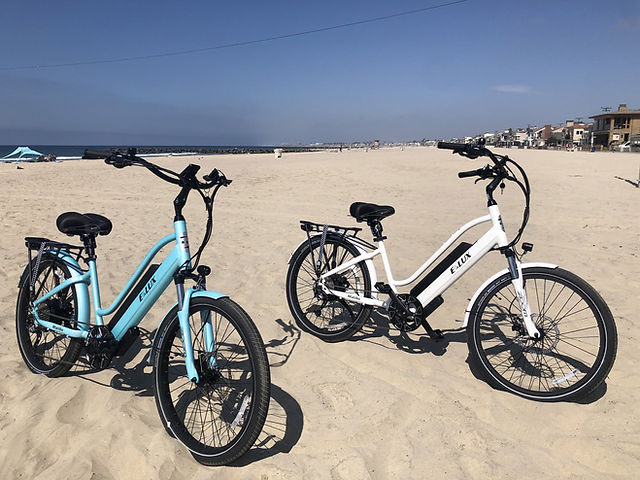
Queuing
Russians are known for queuing, so follow suit when waiting in line for tickets or boarding public transport.
“Russians are known for queuing, so follow suit when waiting in line for tickets or boarding public transport. Respecting and adhering to local customs, like forming an orderly line, not only shows cultural awareness but also contributes to a smoother and more organized experience for everyone. Standing in line is a practice embedded in courtesy and consideration, ensuring fairness and efficiency in public spaces. By embracing these etiquettes, you blend seamlessly into the local fabric, enhancing your overall travel experience and fostering a positive interaction with the community.”
To delve further into this matter, we encourage you to check out the additional resources provided here: Washington State Department of Transportation
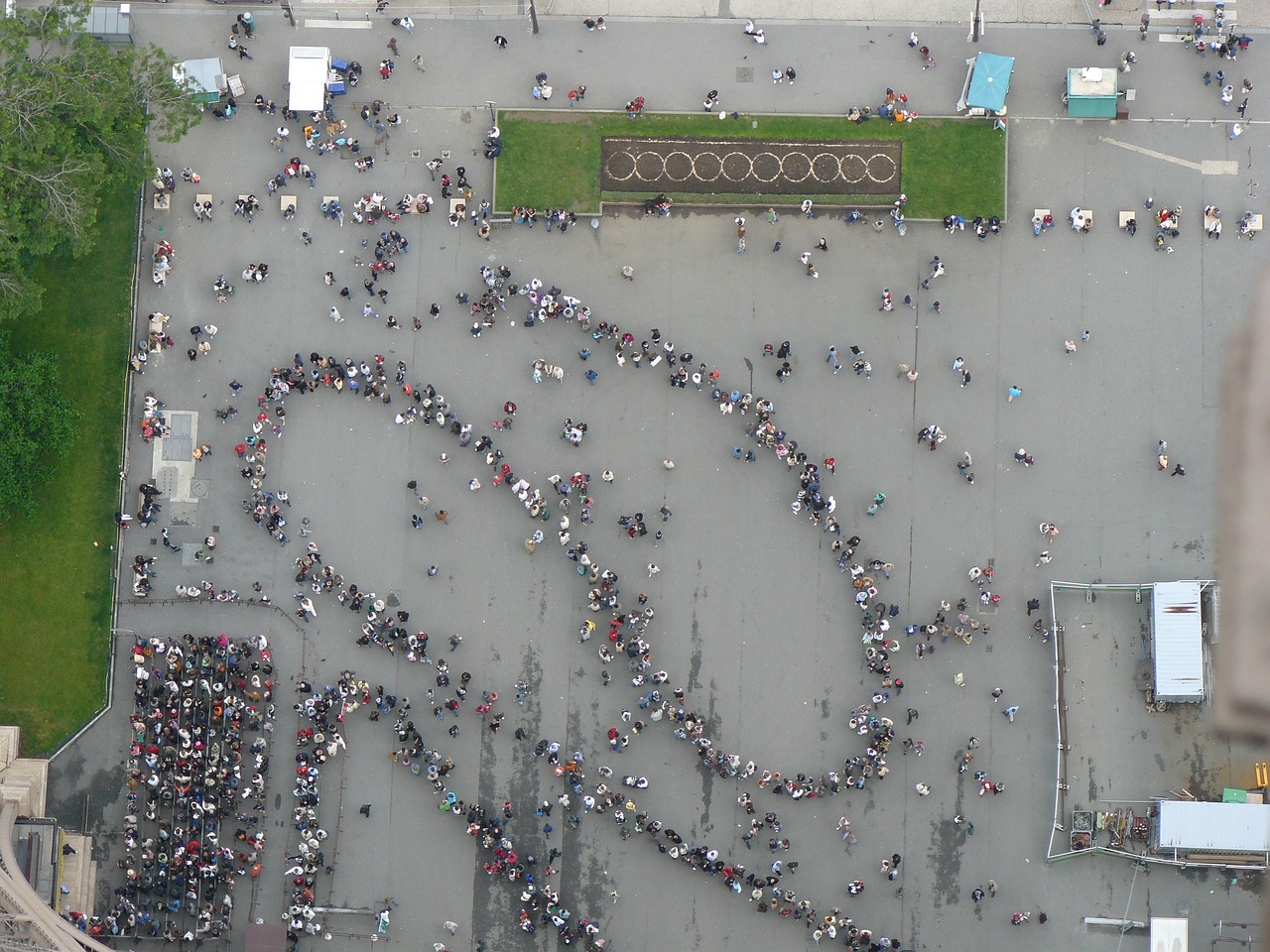
Priority Seating
Offer your seat to elderly passengers, pregnant women and people with disabilities.
Offering your seat to elderly passengers, pregnant women and individuals with disabilities is not just a gesture of courtesy; it’s an expression of empathy and a small but meaningful way to make the world a kinder and more inclusive place for everyone.
When you give up your seat on public transportation or in any communal setting, you’re acknowledging the unique needs and challenges that some individuals may face. Elderly passengers may have difficulty standing for extended periods due to physical limitations. Pregnant women, especially in the later stages of pregnancy, often experience discomfort and fatigue. People with disabilities may have mobility issues that make standing on public transport or waiting in long lines particularly challenging.
By offering your seat, you’re extending a helping hand to these individuals, making their journey or experience more comfortable and less stressful. It’s a simple act that can have a profound impact on someone’s day, easing their physical discomfort and brightening their mood.
Moreover, offering your seat sets a positive example for those around you, encouraging a culture of kindness and consideration. When others witness your act of compassion, it may inspire them to do the same, creating a ripple effect of goodwill and fostering a more compassionate society.
In addition to the immediate benefits for those you assist, offering your seat can also be personally rewarding. It connects you to your community and reminds you of the shared humanity that binds us all. It’s a reminder that small acts of kindness can make a big difference and that we all have the power to contribute to a more inclusive and caring world.
So, the next time you find yourself in a situation where offering your seat is possible, remember that this simple gesture is more than just giving up a physical space—it’s about creating a space for kindness, empathy and understanding in the world.
Should you desire more in-depth information, it’s available for your perusal on this page: 14 FAM 560 ALLOWABLE TRAVEL AND MISCELLANEOUS …
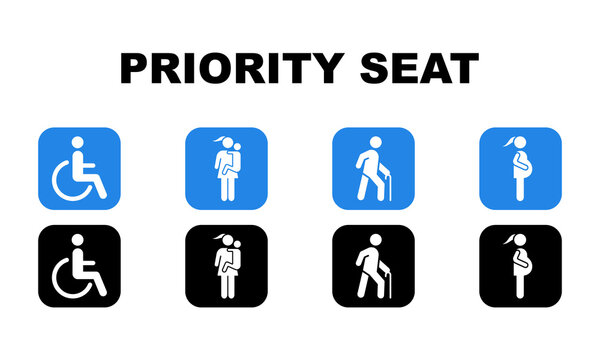
Validation
Always validate your transport card or ticket before entering the Metro or other modes of transportation.
Validating your transport card or ticket before embarking on your journey is more than just a procedural formality; it’s a fundamental step that ensures a smooth and hassle-free transportation experience. Here’s why it’s essential to always validate your ticket or card before using public transportation:
Fare Compliance: Validating your ticket demonstrates your commitment to adhering to the fare regulations of the transportation system. It’s a responsible action that helps maintain the integrity of the public transportation network, ensuring that everyone pays their fair share for the services provided.
Avoiding Fines and Penalties: Public transportation authorities typically have strict regulations in place to deter fare evasion. Failure to validate your ticket or card can result in fines or penalties, which can be not only financially burdensome but also time-consuming and inconvenient. By validating your ticket, you avoid the risk of facing such consequences.
Smooth Boarding: Validating your ticket or card before entering a mode of transportation streamlines the boarding process. It allows you to pass through turnstiles, gates or ticket checks without delays or disruptions. This not only benefits you but also contributes to the efficient flow of passengers, reducing congestion during peak travel times.
Fair Allocation of Resources: Public transportation systems rely on fare revenue to maintain and improve their services. By validating your ticket, you contribute to the financial sustainability of the system, which, in turn, helps ensure the availability of well-maintained vehicles, timely schedules and a better overall transportation experience for all riders.
Peace of Mind: Knowing that you have a validated ticket or card provides peace of mind throughout your journey. You won’t have to worry about encountering fare inspectors, being denied access or facing financial consequences during your commute. This peace of mind allows you to focus on your destination and enjoy a stress-free trip.
Respect for Rules and Regulations: Using public transportation is a shared responsibility. Validating your ticket or card is a way of showing respect for the rules and regulations set by the transportation authority. It reflects a sense of civic duty and an understanding of the importance of contributing to the well-being of your community.
Support for Transportation Services: Public transportation plays a vital role in reducing traffic congestion, lowering carbon emissions and providing accessible mobility options for residents and visitors alike. By validating your ticket or card, you actively support the continuation and improvement of these essential services.
In summary, validating your transport ticket or card is a simple yet significant action that ensures a fair, efficient and enjoyable transportation experience for yourself and your fellow passengers. It helps maintain the integrity of the system, avoids potential fines and contributes to the sustainability of public transportation services. So, the next time you embark on a journey, remember to validate your ticket—it’s a responsible and considerate way to navigate the city’s transportation network.
Looking for more insights? You’ll find them right here in our extended coverage: Getting Around Poland By Public Transit – A Comprehensive Guide …

Language
While many residents in Moscow speak English or other languages, having key addresses and destinations written in Cyrillic can be helpful for taxi or ride-sharing drivers.
While it’s true that English and other languages are spoken by many residents in Moscow, understanding and using Cyrillic script can be a valuable skill for travelers, especially when it comes to getting around the city conveniently. Here’s why having key addresses and destinations written in Cyrillic can prove immensely helpful when interacting with taxi or ride-sharing drivers:
1. Local Language Appreciation: Demonstrating an effort to engage with the local language, even at a basic level, is often appreciated by Moscow’s residents. Using Cyrillic for addresses and destinations shows respect for the city’s culture and can lead to more positive interactions with locals.
2. Wider Communication: While some residents may speak English or other languages, not all taxi or ride-sharing drivers are proficient in foreign languages. By using Cyrillic, you can ensure clear communication with drivers who might have limited language skills, enhancing the overall convenience of your journey.
3. Improved Accuracy: Moscow’s street names and addresses are primarily written in Cyrillic. Using the local script reduces the chances of misunderstandings and ensures that your driver can accurately navigate to your intended destination, saving time and minimizing potential hassles.
4. Versatility: Learning to read Cyrillic is a valuable skill not limited to taxi interactions. It allows you to navigate public transportation, read signs and access a broader range of services. It enhances your overall independence when exploring the city.
5. Emergency Situations: In rare cases of emergencies or unexpected situations, being able to read Cyrillic can be crucial for seeking help, communicating with authorities or identifying important landmarks.
6. Local Experience: Embracing Cyrillic script enriches your overall travel experience. It enables you to explore local businesses, eateries and cultural sites that may not have English signage, opening doors to hidden gems and authentic experiences.
7. Convenience: Having addresses and destinations written in Cyrillic on your phone or a printed map simplifies the process of booking rides with taxi or ride-sharing apps. It streamlines the pick-up and drop-off process and ensures your driver can quickly locate you.
8. Cultural Connection: Learning Cyrillic script can be an enjoyable part of your travel experience, deepening your connection to Moscow’s rich cultural heritage. It’s an opportunity to engage with the city’s history and language, adding depth to your exploration.
In summary, while English and other languages are indeed spoken in Moscow, embracing Cyrillic script for addresses and destinations can significantly enhance your travel experience. It fosters better communication, improves accuracy in navigation and allows you to engage more fully with the local culture. Whether you’re using taxi services, public transportation or simply exploring the city, Cyrillic literacy is a valuable tool that ensures smoother and more enjoyable travels in Moscow.
For a comprehensive look at this subject, we invite you to read more on this dedicated page: Transit & Commuter Services | Loudoun County, VA – Official Website

Navigation Apps
Use navigation apps like Yandex.Maps or Google Maps to plan your routes, check real-time traffic conditions and estimate travel times.
In today’s fast-paced world, harness the power of modern technology to enhance your travel experience by using navigation apps such as Yandex.Maps or Google Maps. These invaluable tools not only simplify your journey but also open up a world of possibilities to make your trips more efficient, enjoyable and stress-free.
Plan Your Routes with Precision: Navigation apps are your virtual cartographers, helping you chart your course with pinpoint accuracy. Whether you’re exploring a new city or navigating through your daily commute, these apps offer multiple route options. You can choose the fastest route, the most scenic one or the route that avoids tolls or congested areas. Tailor your journey to your preferences and ensure you’re always on the right path.
Real-Time Traffic Updates: One of the standout features of these apps is their ability to provide real-time traffic updates. They tap into live traffic data, using information from millions of drivers on the road to offer instant insights into congestion, accidents, road closures and other delays. By staying informed, you can make informed decisions to reroute and avoid traffic jams, ultimately saving you valuable time.
Estimate Travel Times: Navigation apps are not just about getting from point A to point B; they also allow you to estimate travel times accurately. Whether you’re heading to a business meeting, catching a flight or meeting friends for dinner, these apps provide estimated arrival times based on current traffic conditions. This helps you plan your day effectively, ensuring you’re never late or rushing unnecessarily.
Explore Points of Interest: Beyond navigation, these apps are your digital concierge. They can recommend points of interest along your route, from nearby restaurants and gas stations to scenic viewpoints and cultural attractions. Discover new places to visit or find convenient stops for rest and refreshment, all with a few taps on your smartphone.
Offline Maps: Don’t worry about losing your way when you venture off the grid. Many navigation apps offer offline map functionality, allowing you to download maps for specific regions or areas. This is especially handy when you’re traveling internationally and want to conserve data or when you’re in areas with weak or no internet connectivity.
Multi-Modal Transportation: In urban environments, these apps often integrate public transportation information. This means you can seamlessly switch between driving, walking, cycling or using public transport on a single journey, making it easier to navigate complex city landscapes.
Safety and Security: Some navigation apps also offer safety features like real-time incident reporting, which enables users to alert others about accidents, road hazards or other emergencies, contributing to a safer driving experience for all.
In a world where time is precious, navigation apps like Yandex.Maps and Google Maps are indispensable tools that empower you to take control of your travel experiences. With real-time information at your fingertips, you can make smarter choices, enjoy more efficient routes and focus on the journey itself, rather than the hassles of getting there. So, whether you’re embarking on a grand adventure or just navigating your daily routine, let these apps be your trusted guides on the road.
To expand your knowledge on this subject, make sure to read on at this location: How Moovit improved its app to help people with disabilities ride …

Navigating Moscow’s transportation system may seem daunting at first, but with a bit of preparation and familiarity with the available options, you’ll find that getting around the city is both convenient and efficient. Whether you’re exploring historic landmarks, visiting cultural attractions or commuting to work, Moscow’s transportation network has you covered, ensuring you can make the most of your time in this vibrant city.
Navigating Moscow’s transportation system may seem daunting at first, but with a bit of preparation and familiarity with the available options, you’ll find that getting around the city is both convenient and efficient. Whether you’re exploring historic landmarks, visiting cultural attractions or commuting to work, Moscow’s transportation network has you covered, ensuring you can make the most of your time in this vibrant city.
Plan Ahead for Seamless Travel:
To make your Moscow journey smooth, it’s advisable to plan your routes in advance. Utilize smartphone apps or websites that provide real-time information on public transport schedules, routes and any service updates. Knowing your options and having backup plans can help you avoid unnecessary stress and delays, allowing you to focus on enjoying your time in the city.
The Metro: Your Underground Lifeline:
As previously mentioned, Moscow’s metro system is a marvel in itself. With its comprehensive network of lines and stations, it’s often the fastest way to traverse the city. Take some time to study the metro map, which is conveniently available in both Russian and English. Once you’re in the metro, the station announcements and signage are also in English, making it accessible to international visitors.
Bus, Tram and Trolleybus Adventures:
While the metro is the backbone, Moscow’s surface transport options provide a unique way to explore the city. Buses, trams and trolleybuses connect various neighborhoods and allow you to witness everyday life in Moscow up close. They can also take you to destinations not directly accessible by the metro. Don’t forget to check the schedules, as they can be particularly useful for reaching destinations during late hours when the metro is closed.
Embrace Modern Mobility:
In recent years, Moscow has been embracing modern transportation trends. Bike-sharing programs and electric scooters are increasingly popular and offer a fun and eco-friendly way to explore the city. You can rent bikes or scooters using apps, making it easy to weave through Moscow’s streets and parks while enjoying the fresh air and sights.
Payment Options for Convenience:
Make your journey even more convenient by using contactless payment methods. Transport cards like Troika cards are a hassle-free way to pay for your rides on the metro, buses and trams. Top them up at metro stations or online and you won’t have to worry about carrying cash or buying individual tickets for every trip.
English-Speaking Assistance:
While not everyone you encounter may speak English, you can find assistance in English at major transport hubs like airports, train stations and central metro stations. Information booths often have English-speaking staff who can help with directions, ticket information and general queries.
Relax and Explore:
Finally, remember that navigating Moscow’s transportation system isn’t just about reaching your destination; it’s an integral part of your Moscow experience. Embrace the journey, whether it’s the elegant metro stations, the scenic routes of surface transport or the freedom of cycling through the city. Each mode of transportation offers a different perspective on Moscow’s rich tapestry of culture, history and contemporary life.
In conclusion, with a bit of preparation and an adventurous spirit, Moscow’s transportation system transforms from an initial challenge into a tool for discovering the city’s treasures. So, hop on a metro train, catch a bus, rent a bike or take a leisurely tram ride—Moscow’s transportation options are your keys to unlocking the countless wonders this city has to offer.
Don’t stop here; you can continue your exploration by following this link for more details: Smart city technology for a more liveable future | McKinsey
More links
Should you desire more in-depth information, it’s available for your perusal on this page: Transportation | Pullman Campus | Washington State University
